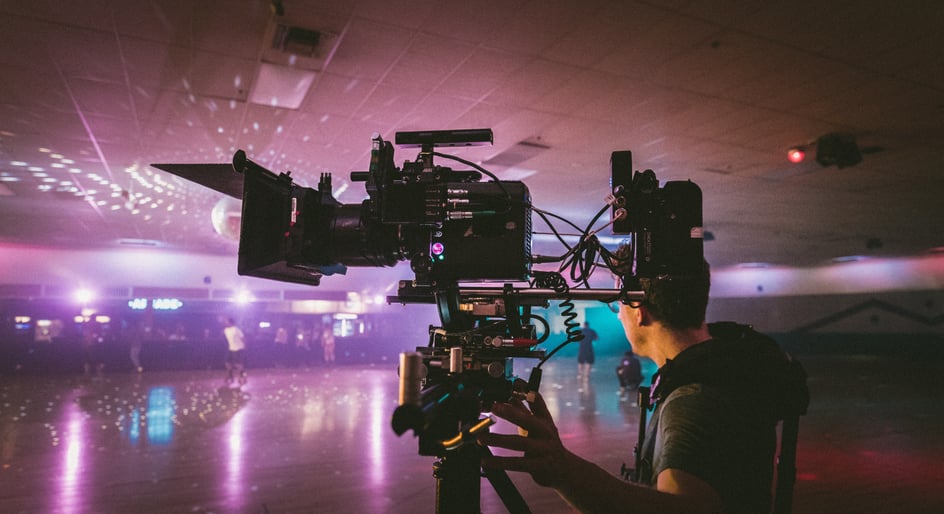
Mar 7, 2022
You know, it might get a lot of knocks from old-timers who have worked in the industry for decades, but there’s actually something cool about living in a digital revolution.
For one, it doesn’t take much — if anything at all — to start a video production company on your own these days. All you really need is a dream, a business plan, and, of course, a video camera.
But say you are starting your very own video production company for the first time today. What camera do you pick? And why?
Before we address those issues, here’s a quick list of the best video cameras to start a video production company with (along with prices for each):
- Canon C300 mk III: $10,999
- Blackmagic URSA Mini Pro 12K: $5,995
- RED KOMODO 6K: $5,995
- Sony FX6: $5,998
- Nikon Z9: $5,496
- Canon R5 C: $4,499.
- Panasonic S1H: $3,697
- Sony a7S III: $3,498.00
- Blackmagic Pocket Cinema Camera 6K Pro: $2,495
- Fujifilm X-T4: $1,699
Of course, there’s a lot to unpack and explore here. But before we go over these selections in-depth, let’s look at some of the key tenets of what you should look for if you truly want the best video production camera body for your budding company and career.
What makes a good video production camera
Basically, to get into video production, you need to have the best video camera that represents the latest (or close to latest) and greatest in terms of what the market is offering. This is a mixed blessing of sorts for two reasons:
- The market is oversaturated with quality cameras and manufacturers who have made unbelievable strides in terms of tech breakthroughs and cost reductions.
- This same advanced technology also means that many cameras are surpassed within less than a year with even better specs and features, meaning you might need yet another upgrade sooner rather than later.
We’ll keep those two points in mind as we outline these core components of what the market dictates for digital video cameras today. The main things filmmakers look for are:
- At least 4K video or better. (And full frame cameras are preferable to micro four thirds sensor size options.)
- Enough bit depth to accurately render colors and tones, as well as high quality video.
- High-frame rate capability. (It doesn’t have to be 4K+, but that doesn’t hurt.)
- IBIS or solid stabilization. (Ideally in-camera, or at least addressed in the design.)
- The dynamic range needed to shoot in a variety of light situations.
- LOG recording and/or customizable LUT controls for shooting cinematic-grade footage.
- Modular design which you use as part of a bigger cinema buildout with external monitors, attachable microphones, pull focus controls, etc.
If your video camera will at least address (if not surpass) all of these requirements, you’ll be in a good position to win clients and create projects which look as good (if not better) than your competition and the rest of the general video-making public.
10 best cameras to start a video production with
Now, to help you on your journey, we’ve outlined our top 10 selections for the best digital camera to start a video production company with. Keep in mind, these video cameras range in price starting at the highest-end (around $10K) and going down to the lowest end (around $1.5K).
Obviously there is a major difference in image quality between these extremes, but if you follow the guidelines above, the success of your video production company won’t be just about which camera you choose, but how you choose to use it.
1. Canon C300 mk III
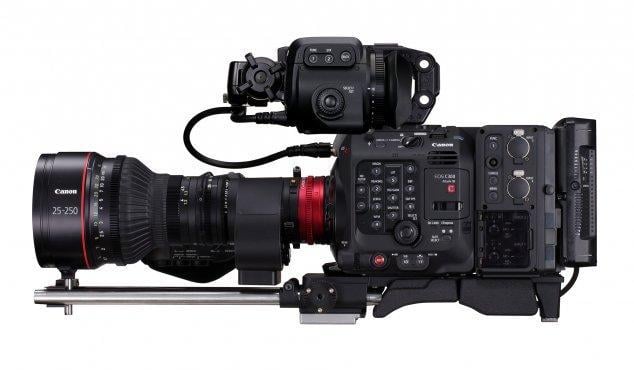
To start off our list, we’re going with one of the best workhorse cinema cameras currently on the market.
Unlike some of these other selections, we won’t bury the lede here — this camera is relatively expensive compared to your normal DSLRs and mirrorless cameras. (However, it’s worth noting that as far as cinema cameras go, this is pretty normal actually.)
With a Super 35mm sensor capable of up to 4K video at 120p and 16 stops of dynamic range, there’s a reason this is tops on our list. With the C300 mk III, you can rest assured that you’ll be able to get great, cinema-quality footage no matter the setting.
Like its C300 predecessors, this mk III is also great for run-and-gun projects like documentaries, high-end weddings, and your more challenging corporate and commercial shoots with its electric image stabilization and high frame rate recording.
- Super 35mm Dual Gain Output (DGO) Sensor
- 4K 120p, 2K Crop 180p HDR
- Cinema RAW Light and XF-AVC H.264 Codec
- EF Lens Mount, DIG!C DV7 Image Processor
- Dual Pixel CMOS AF and Face Detection
- LM-V2 4.3" LCD Touchscreen Monitor
- 12G-SDI and 4-Channel Audio Recording
- 2 x CFexpress Slots, Canon Log2 and 3
- Electronic Image Stabilization
- Proxy Recording, Anamorphic Lens Support
Price: $10,999.00
2. Sony FX6
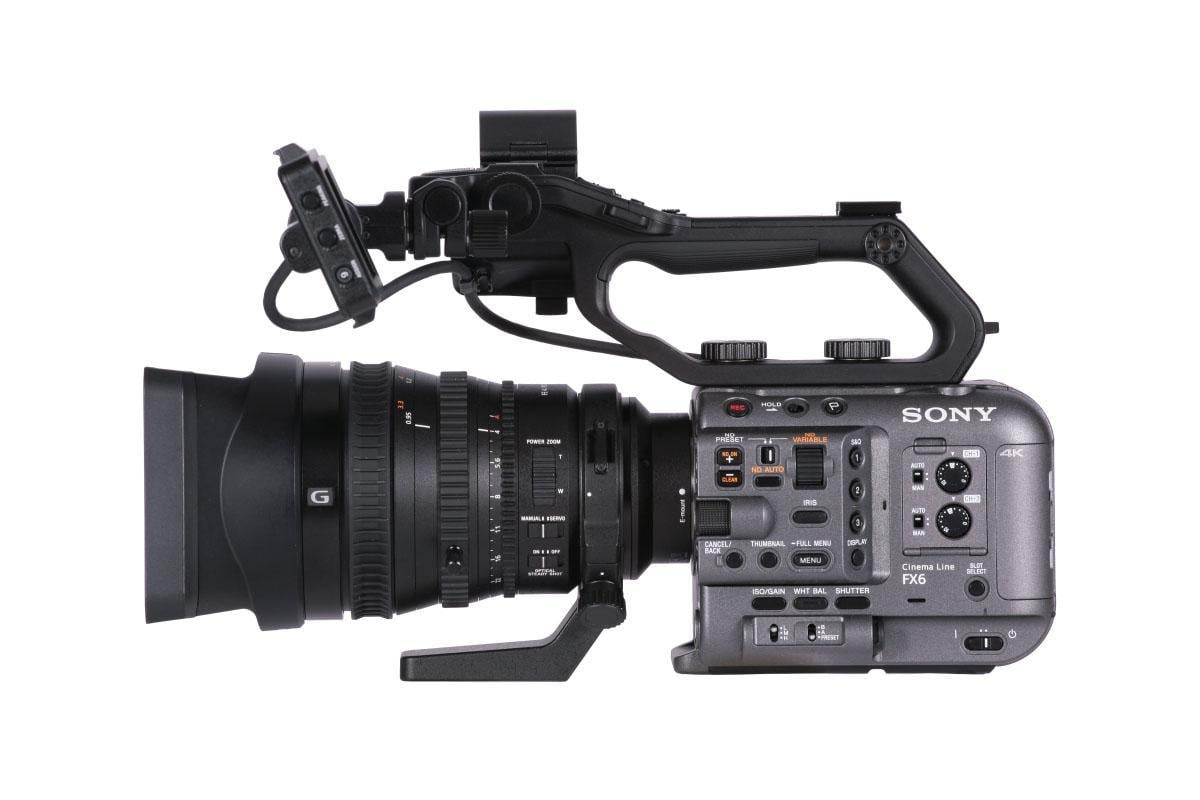
Moving down significantly in price but still packing a heavy punch for those who might not have used a digital cinema camera in the past, the Sony FX6 is truly a 4K full-frame behemoth. And it’s making a name for itself in the commercial — as well as narrative — world of filmmaking.
With a 4K full-frame 10.2MP CMOS sensor capable of DCI 4K video (up to 60p) and UHD 4K (at up to 120p), the FX6 should give you plenty of great image quality and leeway with its 15+ stops of dynamic range and up to 10-bit, 4:2:2 recording.
Aimed to be a competitor to Canon’s cinema camera line (like our aforementioned C300 mk III), the FX6 should be a true workhorse for a variety of shoot-types as it’s built for documentary and heavy-commercial use.
- 4K Full-Frame 10.2MP CMOS Exmor R Sensor
- DCI 4K60p | UHD 4K120 | 1080p240
- 15+ Stops of Dynamic Range in S-Log 3 EI
- Compact Form Weighs Just <2 lb
- Phase Detection AF/Face Tracking/Eye AF
- Base 800-12,800 ISO / 320-409,600 Max
- S-Cinetone, S-Log3, HLG Modes
- 10-Bit 4:2:2 XAVC-I/16-Bit Raw Output
- Dual CFexpress Type A/SDXC Card Slots
Price: $5,998.00
3. Blackmagic URSA Mini Pro 12K
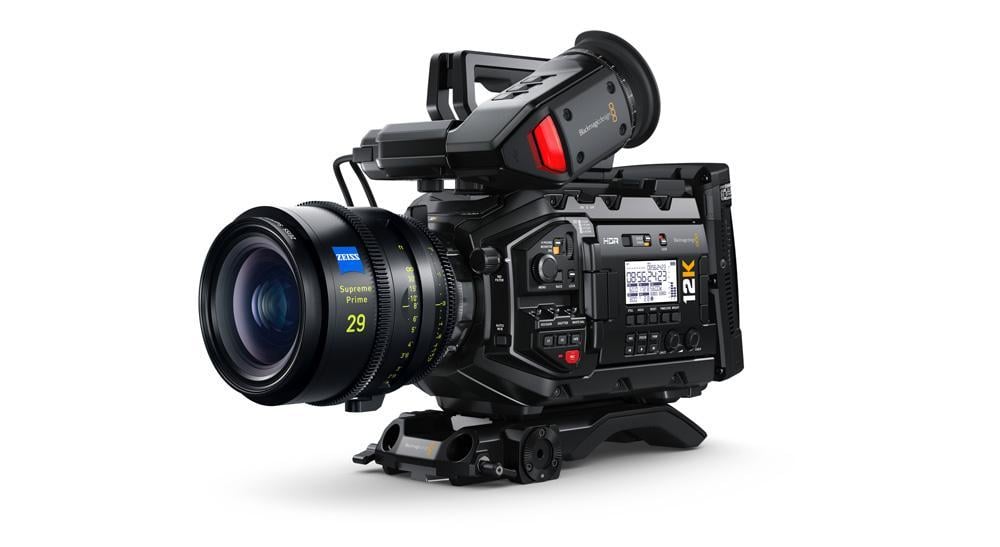
Also at a similar price to the above, the Blackmagic URSA Mini Pro 12K is another great option to consider. Perhaps best known for its coloring and editing programs like DaVinci Resolve, Blackmagic Design has really changed the game in the camera market with cameras like this URSA Mini Pro 12K.
With a 12K-capable Super35 HDR CMOS sensor, this beast can record 12K 17:9 video at up to 60p, as well as push plenty of other high frame rate ratios as well.
The real kicker might be its 80MP per frame of Blackmagic Raw which — when coupled with a great coloring program like Resolve — can look absolutely outstanding for your clients.
- 12K Super35 HDR CMOS Sensor
- 12K 17:9 to 60 fps/12K 2.4:1 to 75 fps
- DCI 8K to 120 fps/14 Stops Dynamic Range
- User-Changeable PL Lens Mount
- 4K Super16 up to 220 fps
- 80MP/frame Blackmagic Raw
- Dual CFast or SD Card Recording
- USB Type-C Recording to Disk/SSD
Price: $5,995.00
4. RED KOMODO 6K
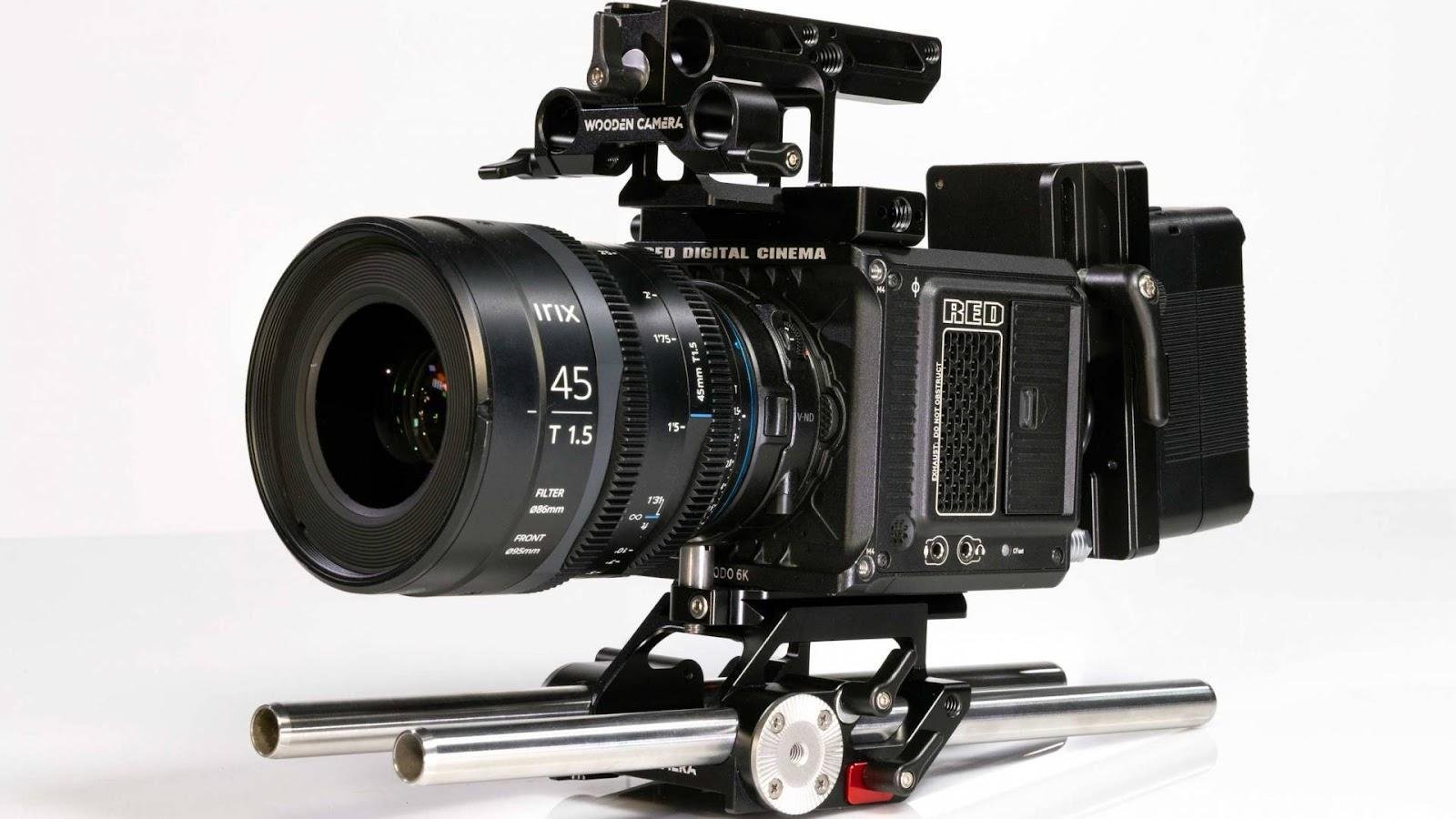
We’d be remiss to talk about some of the best video production cameras without mentioning at least one RED Digital Cinema camera option.
And truth be told, if you’re 100% serious about giving clients the absolute best footage quality possible (or perhaps shooting your feature film as well), then some of the higher end RED cameras (or ARRI ALEXAs) might be your best bet. They’re just nowhere near as cheap.
That’s why the RED KOMODO 6K offers the best of both worlds. Coming in at a very reasonable price point in retrospect, the KOMODO 6K boasts a 19.9MP Super35 CMOS sensor capable of 6K video at up to 40p, along with some serious 16+ stops of dynamic range.
If you’d like to start out with your first RED camera and explore shooting in REDCODE RAW or other high quality formats, this might be your best chance to become a RED-head.
- 19.9MP Super35 Global Shutter CMOS
- Compact, 2.1 lb All-in-One Design
- Canon RF Lens & ARRI CFast 2.0 Support
- 16+ Stops Dynamic Range
- Up to 6K40, 5K48, 4K60 & 2K120 Recording
- REDCODE RAW HQ/MQ/LQ & Apple ProRes
- Integrated 2.9" 1440 x 1440 Touchscreen
- Wireless Control & Preview via Wi-Fi
- CFast 2.0 Card Slot; RED IPP2 Support
- EF-to-RF Mechanical Adapter Included
Price: $5,995.00
5. Nikon Z9
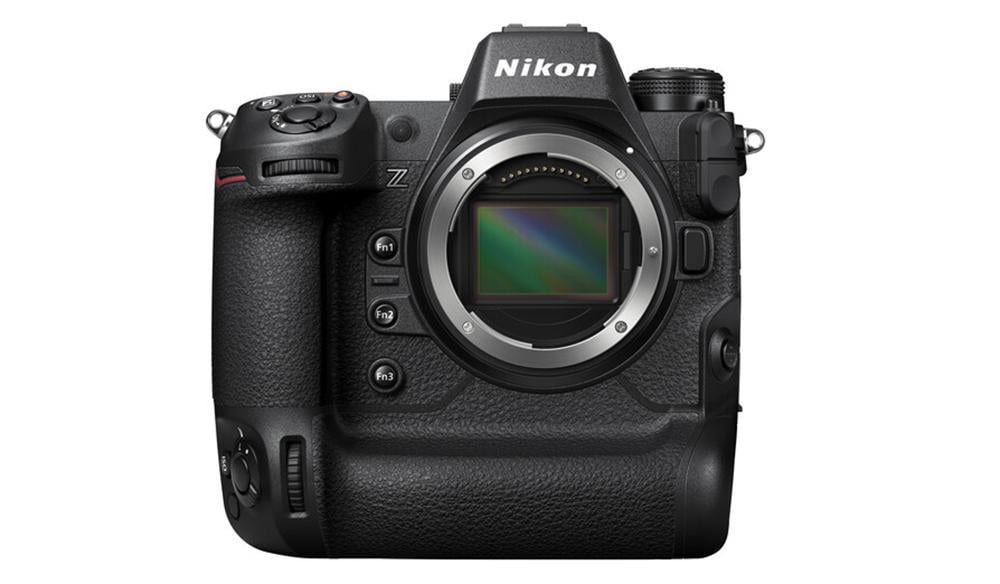
Moving on from what I’d call the “cinema camera” section of our list, we have our first surprisingly and just as powerful and functional option from Nikon to consider.
The Nikon Z9 features a huge 45.7MP CMOS sensor capable of a whopping 8K video at up to 30p. While not as big or built out as some of its cinema counterparts, make no mistake, this camera rocks.
If you've had Nikon cameras and/or lenses in the past, you know you’ll get great footage quality with its 10-bit internal recording and EXPEED 7 image processor. Plus, while it’s not a bigger cinema camera, it does have a solid array of easier-to-access features like a tilting LCD touchscreen, 2 CFexpress Type B card slots, and plenty of AF bells and whistles.
- 45.7MP FX-Format Stacked CMOS Sensor
- EXPEED 7 Image Processor
- 8K30p and 4K120p Video, 10-Bit Internal
- Up to 20 fps Raw, 30 fps JPEG Shooting
- 493-Point Phase-Detection AF System
- AI-Based Subject Detection and Tracking
- Blackout-Free Real Live Viewfinder
- 3.2" 4-Axis Tilting Touchscreen LCD
- Vertical Grip, 2x CFexpress Type B Slots
- 5 GHz Wi-Fi, Bluetooth, and GNSS
Price: $5,496.95
6. Canon R5 C
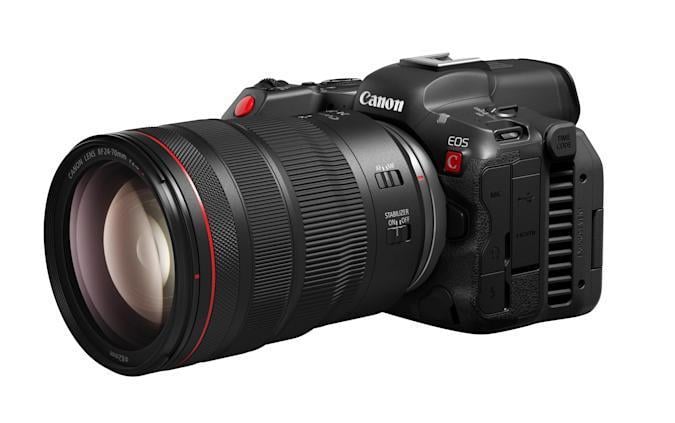
This was a tough call debating between which Canon camera to include at this spot. On one hand, the Canon R5 might be the most important camera in Canon’s recent history, however it’s been dogged a bit for some overheating issues. We could also shout out the Canon C70 as a better run-and-gun workhorse alternative without the 8K.
However, after Canon announced the R5 C, we might finally have the best hybrid option for any video production company to plan a brand around. With a 45MP full-frame CMOS sensor capable of 8K video at up to 60p (which can also record 12-bit Cinematic RAW Light footage as well), it’s hard to find a camera with better specs at this price.
It’s also got several years of Canon’s research and development behind solving some of their early mirrorless camera issues. Overall, the R5 C looks to be the closest in line to restoring the brand’s iconic DSLR 5D legacy to this new mirrorless-generation.
- Two Cameras in One Body: Photo + Cinema
- 45MP Stills, Full-Frame 8K CMOS Sensor
- Photo/Video Switch Changes Settings Menu
- JPEG/C-RAW, 12-Bit Cinema RAW Light
- Dual Pixel CMOS AF with Eye Detection
- CFexpress Type-B and SD UHS-II Slots
- Dual-Slot Record, Unlimited Record Time
- Timecode DIN Port, Multi-Function Shoe
- 4-Channel Audio Record with XLR Adapter
- 13 Reassignable Buttons
Price: $4,499.00
7. Panasonic S1H
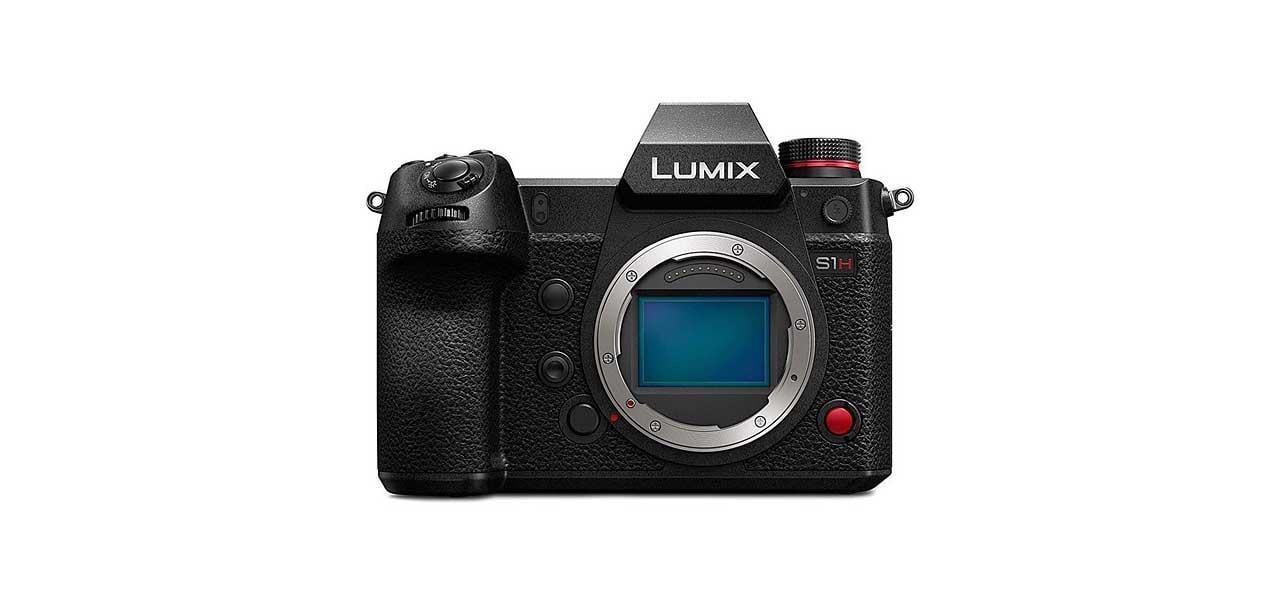
While released before the Canon R5 C, the Panasonic S1H might have seen some of its thunder stolen by newer and more exciting specs. But make no mistake, this is a killer camera offering as well.
With a respectable 24.2MP full-frame CMOS sensor which hosts 6K video at up to 24p, 4:2:2 10-bit DCI/UHD 4K, and beautiful V-Log recording, the S1H more than makes up the difference both with its functionality as well as a price drop from newer mirrorless options.
- 24.2MP Full-Frame CMOS Sensor
- 6K24p Video, 4:2:2 10-Bit DCI 4K/UHD 4K
- V-Log, Dual Native ISO, HFR with Sound
- 5.76m-Dot 0.78x-Magnification OLED LVF
- 3.2" 2.33m-Dot Tilt/Free-Angle Touch-LCD
- 1.8" Top LCD, Tally Lamps, Dual SD Slots
- ISO 100-51200, Up to 9 fps Shooting
- Contrast-Detect 225-Area DFD AF System
- 5-Axis Sensor-Shift Image Stabilization
- Weather-Sealed Construction
Price: $3,697.99
8. Sony a7S III
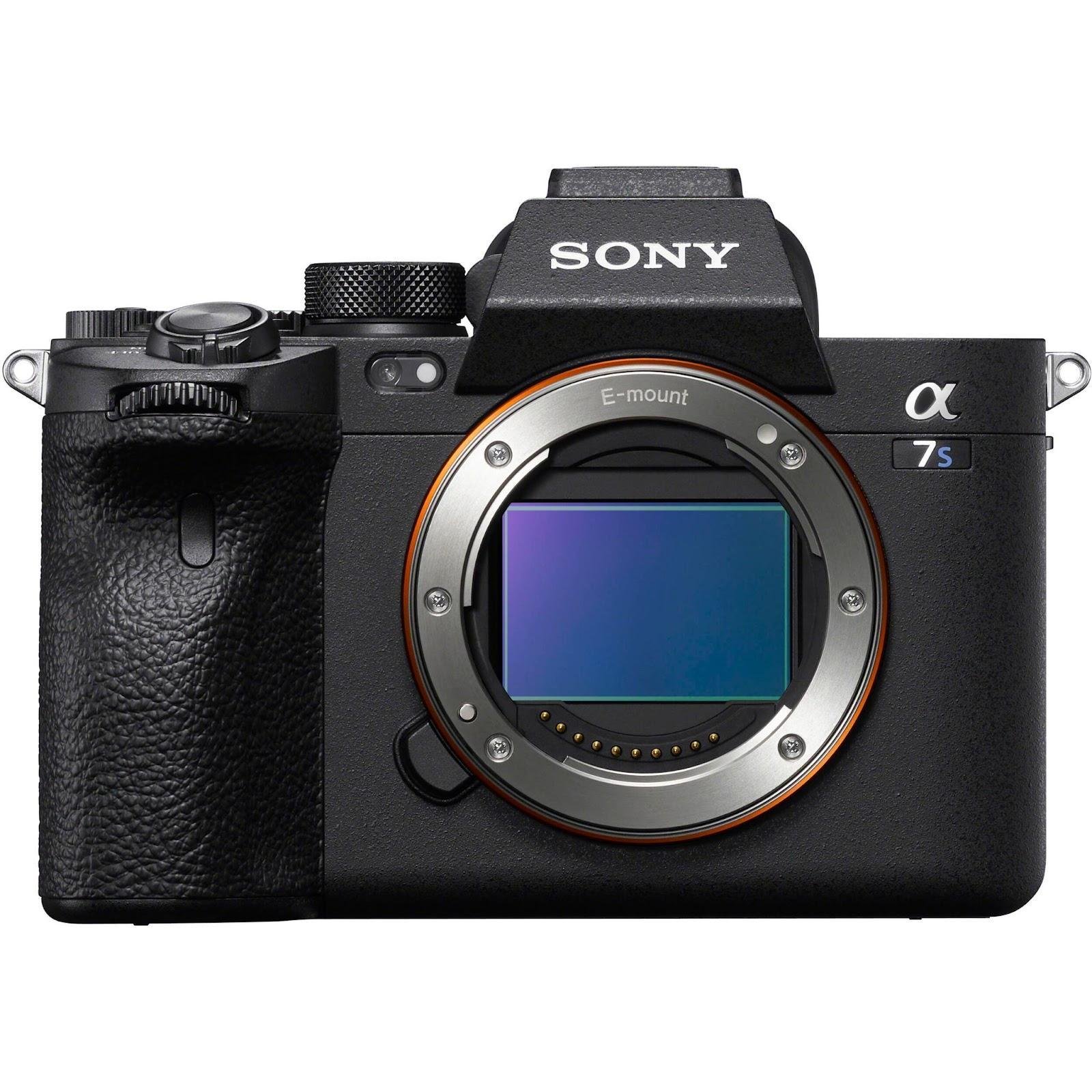
At the expense of alienating any faithful Sony camera fans, we also need to highlight at least one of Sony’s Alpha-line cameras as another great option to consider when investing in your own video production company.
And honestly, if you were to pick up a Sony FX6 (or FX9) as your main cinema camera, the a7S III could make a great B-camera (or even A-cam depending on your budget).
With a 12MP full-frame CMOS sensor that shoots UHD 4K at up to 120p, the a7S III’s day as a top-of-the-charts camera might be gone. But its reliable legacy — built on beautiful colors and crisp, sharp images — remains strong.
- 12MP Full-Frame Exmor R BSI CMOS Sensor
- UHD 4K 120p Video, 10-Bit 4:2:2 Internal
- 16-Bit Raw Output, HLG & S-Cinetone
- 759-Point Fast Hybrid AF
- 9.44m-Dot QXGA OLED EVF
- 3.0" 1.44m-Dot Vari-Angle Touchscreen
- 5-Axis SteadyShot Image Stabilization
- Extended ISO 40-409600, 10 fps Shooting
- Dual CFexpress Type A/SD Card Slots
Price: $3,498.00
9. Blackmagic Pocket Cinema Camera 6K Pro
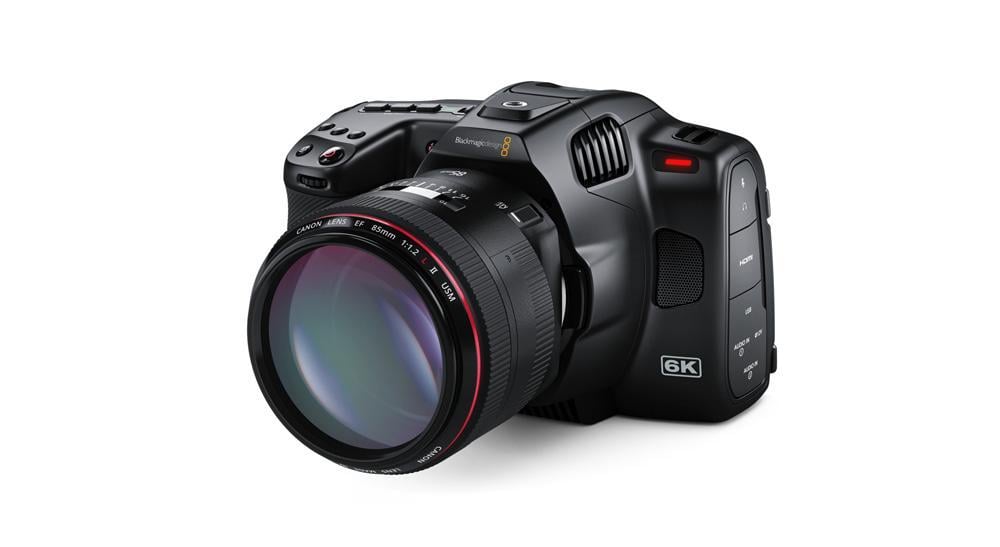
We also absolutely have to recommend one of the cameras from Blackmagic’s Pocket Cinema line, and the Blackmagic Pocket Cinema Camera 6K Pro represents the current best of the bunch.
However, if you are looking for a cinema A-cam and mirrorless b-cam buildout, any of the Blackmagic Pocket Cinema Camera options like the Pocket Cinema Camera 4K or Pocket Cinema Camera 6K will do.
Still, this Blackmagic Pocket Cinema Camera 6K Pro really takes the cake with its compact Super35 HDR sensor which records 6K video at up to 50p. It’s also touched up many design features with a tilting HDR LCD touchscreen, built-in ND filters, and updated color science.
The real perks of the 6K Pro might simply have to do with the RAW recording options and the 13 stops of dynamic range which make this easily one of the most affordable yet highly capable cinema camera-quality options on the market.
- Bright 1500 cd/m² Tilting HDR LCD
- Super35 HDR Sensor, Gen 5 Color Science
- Dual XLR Inputs, Canon Active EF Mount
- NP-F570 Battery, Built-In ND Filters
- Record 6K 6144 x 3456 up to 50 fps
- Dual Native 400 & 3200 ISO to 25,600
- CFast 2.0 & SD/UHS-II Card Slots
- Record up to 120 fps Windowed HD
- USB Type-C Recording, 3D LUT Support
- 13-Stop Dynamic Range, Autofocus Support
Price: $2,495.00
10. Fujifilm X-T4
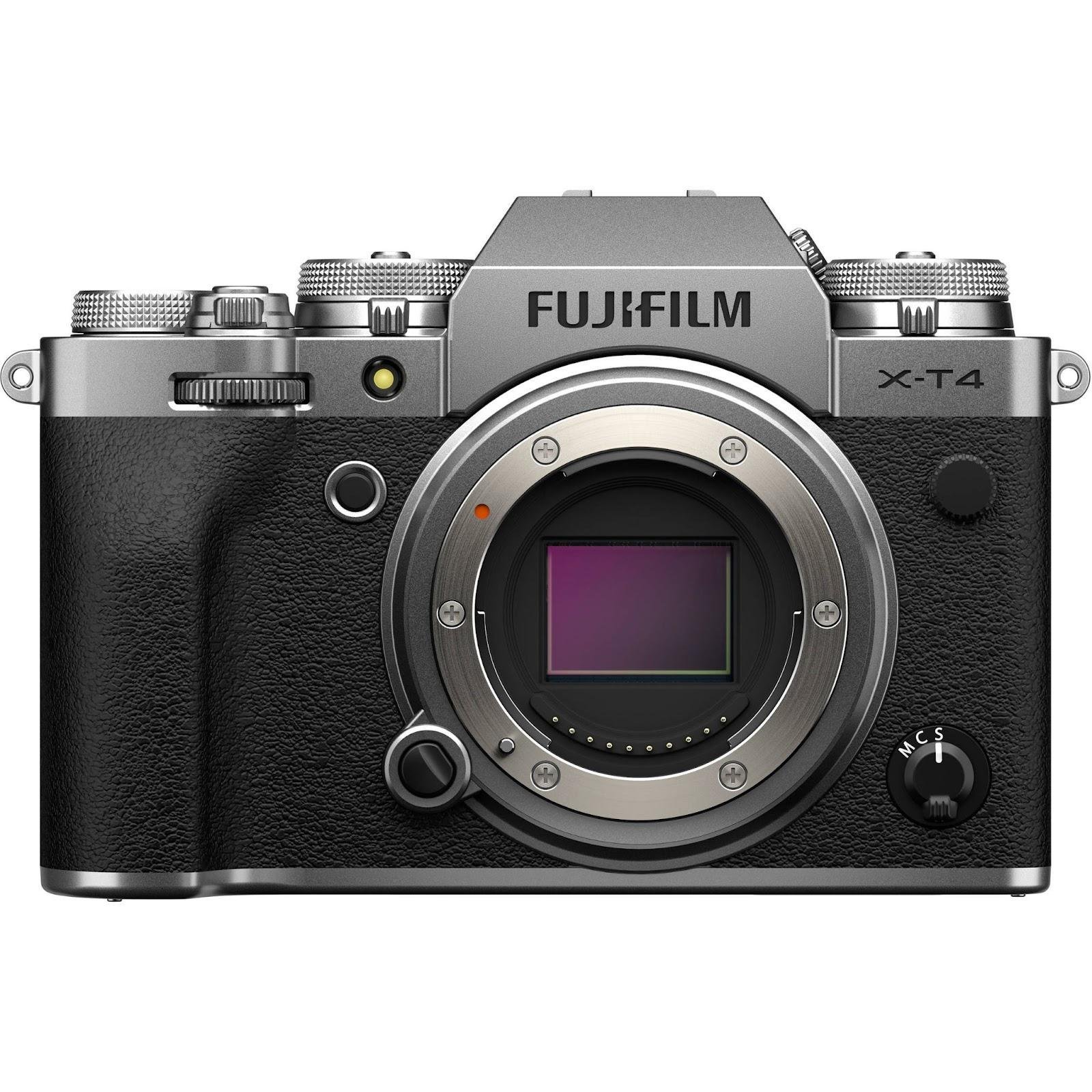
Finally, let’s round out our list with a camera that won’t set you back nearly as much as any of the options above (but might still be a perfect starter camera for your film and video production career).
The Fujifilm X-T4 is a fun and versatile mirrorless camera that’s great for both photo and video. It’s no slouch, with a 26.1MP CMOS sensor that offers DCI/UHD 4K at up to 60p, as well as some impressive HFR Full HD video at up to 240p.
It might not blow its competition out of the water with its bitrate or specs, but the X-T4 offers solid AF and plenty of bells and whistles which should be helpful for those creating content for YouTube or other online destinations.
- 26.1MP APS-C X-Trans BSI CMOS 4 Sensor
- X-Processor 4 Image Processor
- 5-Axis In-Body Image Stabilization
- DCI/UHD 4K at 60 fps, Full HD at 240 fps
- 425-Point Hybrid AF System
- 3.69m-Dot 0.75x OLED EVF
- 3.0" 1.62m-Dot Vari-Angle Touchscreen
- ISO 160-12800, up to 15-fps Shooting
- Bluetooth and Wi-Fi Connectivity
- Film Simulation Modes
Price: $1,699.00
Further reading
Hopefully this guide has given you a better understanding into what makes a good video production camera, as well as some insights into which options might be best for your budding business or career.
If you’d like to check out some other camera roundups, or read up on some helpful filmmaking tips and tricks, check out these additional articles from the Soundstripe blog: